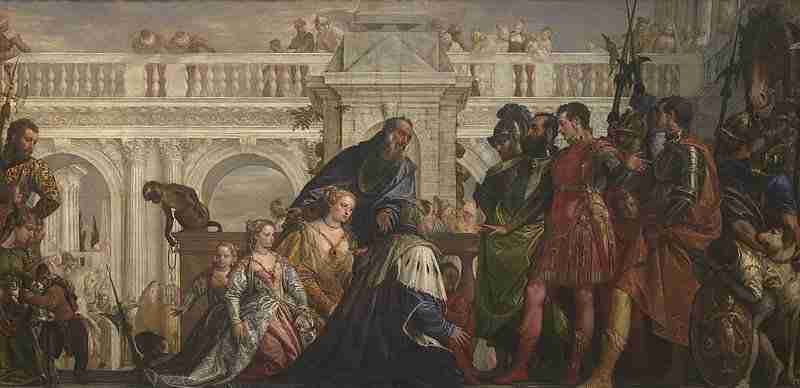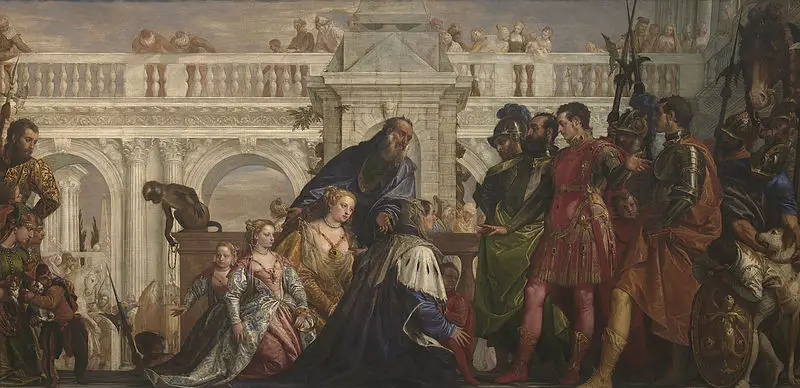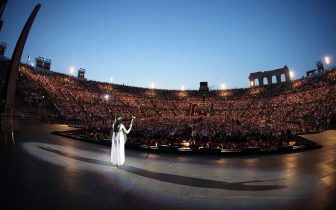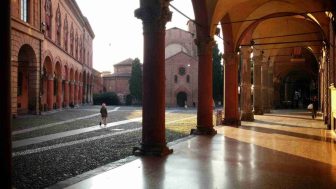
In the latest Art Issue of the New York Review of Books, there are three Italy-related articles that caught my eye.
Andrew Butterfield reviews Veronese: Magnificence in Renaissance Venice, an exhibition running in London’s National Gallery through June 15, 2014. Julian Bell looks at two new books about Piero della Francesca in The Mystery of the Great Piero. And Jonathan Galassi writes Speed in Life and Death (subscription), a piece that deals with Italian Futurism, 1909-1944: Reconstructing the Universe, an exhibition on view at NYC’s Guggenheim Museum through September 1, 2014.
There is also a poem by Michelangelo.
Michelangelo’s note To Giovanni da Pistoia has appeared in many publications over the years, I’m not sure why it is being reprinted here. But the poem is always an illuminating read about the difficulties Michelangelo had in creating his most famous work.
Prodigious Veronese

A review of Veronese: Magnificence in Renaissance Venice at the National Gallery, London
“For much of the twentieth century Veronese was regarded more as a skilled purveyor of decorative finishes than as a profound master, and his reputation was in decline, but of late there are signs of renewed interest, which this show and its catalog will certainly do much to advance. Perhaps more than any other picture in the show, The Family of Darius before Alexander [part of the National Gallery’s permanent collection] reveals his great strengths as a painter; it also makes clear why he can seem so foreign to common modern ideals of art and of the artist.” –Andrew Butterfield
Speed in Life and Death
A review of Italian Futurism, 1909-1944: Reconstructing the Universe at the Solomon R. Guggenheim Museum, New York City
“The Futurists wanted to sweep away what the poet Guido Gozzano called “le buone cose di pessimo gusto,” good things in the worst of taste, and replace them with an insolent, steely, polluting Machine Age. “Time and space ended yesterday,” Marinetti intoned. “We already live in the absolute”—that is, in a state of perpetual youth menaced only by death. “In every young man Marinetti’s gunpowder,” Vladimir Mayakovsky wrote. Marinetti not only wanted to end the monarchy and “de-Vaticanize”; he also argued for replacing the senate with an assembly of the young.” –Jonathan Galassi
The Mystery of the Great Piero
Reviews of the books Piero della Francesca: Artist and Man and Piero’s Light: In Search of Piero della Francesca: A Renaissance Painter and the Revolution in Art, Science, and Religion
“What more can we know about the artist, who died the day that Columbus landed in the New World and who for most of four centuries was nearly forgotten, only to reemerge as an indispensable fixture in modern schemes of art? The Met’s catalog ushers in Piero in the manner we have come to expect: he painted “magical pictures” that combine ‘intimacy and gravity,’ inspiring ‘a sacral awe.’ It points to his ‘almost primitive’ qualities and cites Aldous Huxley’s essay [PDF] of 1925 that names the Resurrection fresco in Sansepolcro as ‘the best picture in the world.’
“All this fits the occasion, but it mystifies. It makes it harder to imagine a human painter at work. Banker has been intent to reverse that process. To do so he has scoured the archives of Tuscany, Umbria, and the Marches. (Sansepolcro lies near the border of the three regions.) If, just possibly, he has been overzealous about tying up loose ends, he can nonetheless boast of personally discovering “over one hundred previously unknown documents specifically relating to Piero.” His methodology is sober and his inferences are toughly argued, and the result must surely count as a vitally important contribution to Piero studies.” –Julian Bell
Check out the New York Review of Books’s Art Issue for these and more reviews.
Last updated on December 9th, 2020Post first published on May 30, 2014






